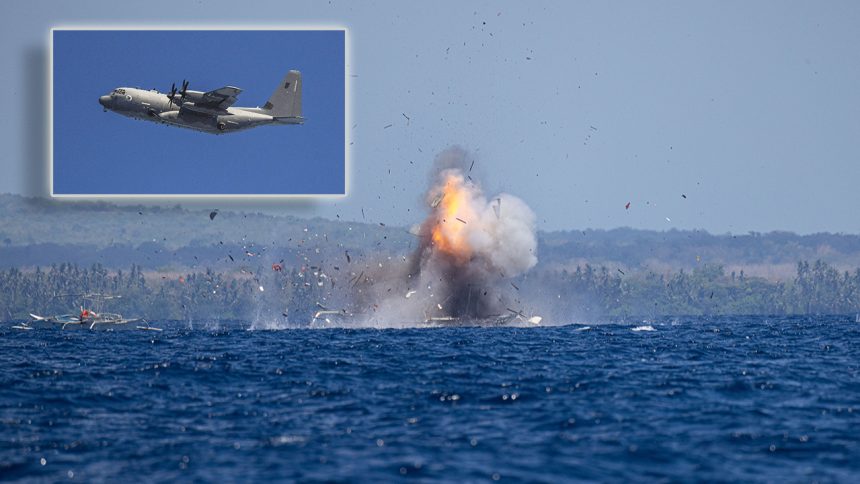The U.S. AC-130J gunship was involved in a maritime littoral strike during Balikatan 24 exercise.
A video recently released by the U.S. DoD shows an AC-130J Ghostrider, belonging to the 27th Special Operations Wing, from Cannon Air Force Base, New Mexico, engaging a target vessel near Lubang, Philippines, April 30, 2024.
The footage shows several shots hitting the water’s surface, followed by an explosion; then you can see the vessel sink and the AC-130J flying overhead.
The firing event took place during a maritime littoral strike, part of Balikatan 24, an annual exercise between the Armed Forces of the Philippines and the U.S. military “designed to strengthen bilateral interoperability, capabilities, trust, and cooperation built over decades of shared experiences.”
This year’s iteration focuses on combined and joint all domain operations across more than 1,000 miles of Philippine territory over 16 days, involving more than a dozen units across the combined force. The goal is to train in “complex littoral and coastal defense operations to secure and protect Philippines’ maritime terrain, territorial waters and exclusive economic zone interests.”
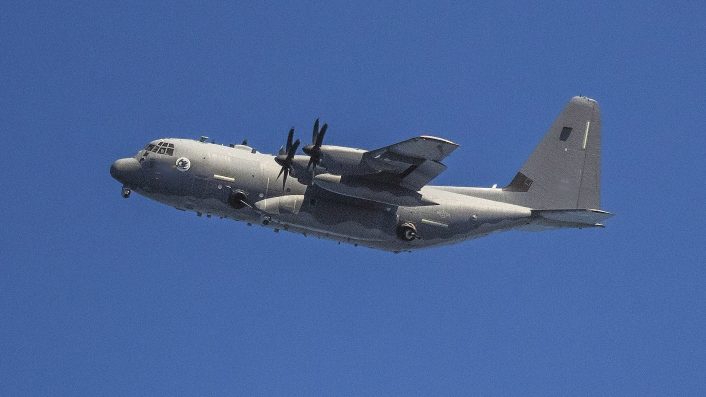
An interesting “use case”
The selection of a small fishing boat as a target is notable because it highlights China’s strategic use of fishing vessels to assert maritime claims, a tactic that has drawn scrutiny from military analysts, in the South China Sea scenario, where China claims sovereignty over almost the entire South China Sea based on historical records, while the Philippines contests these claims and asserts its own sovereignty over certain areas based on the United Nations Convention on the Law of the Sea (UNCLOS).
The dispute revolves around competing territorial claims over various islands, reefs, and waters within the region, and it escalated due to China’s construction of artificial islands and military installations in disputed waters.
Small fishing vessels are increasingly considered unconventional threats and could be used to carry out secondary warfighting tasks such as surveillance, reconnaissance, and logistical support to further China’s strategic interests at sea.
Gunships like the AC-130J are not intended for ship-sinking missions, since manned aircraft like the F-16 or unmanned aircraft like a Reaper would be more suitable for such tasks. However, considering the role they could play in littoral combat, they have started to train in this kind of mission since last year’s iteration of BK exercise.
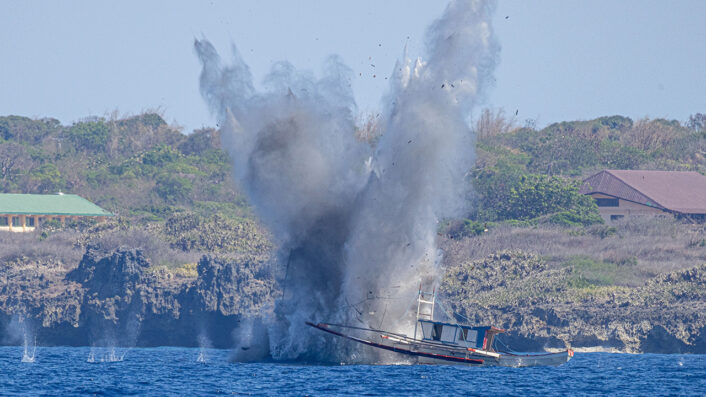
AC-130J
The AC-130J Ghostrider is a 5th generation gunship that has replaced the AC-130W, AC-130U and AC-130H.
The type is a highly modified variant of the C-130J aircraft, featuring advanced technologies and capabilities tailored for special operations missions. Notable enhancements include a modern two-pilot flight station with fully integrated digital avionics, dual inertial navigation systems coupled with GPS, and the Precision Strike Package. This package incorporates a mission management console, robust communications suite, two electro-optical/infrared sensors, advanced fire control equipment, and the ability to deliver precision-guided munitions. The mission management system seamlessly integrates sensor, communication, environmental, order of battle, and threat information to provide a comprehensive operational picture.
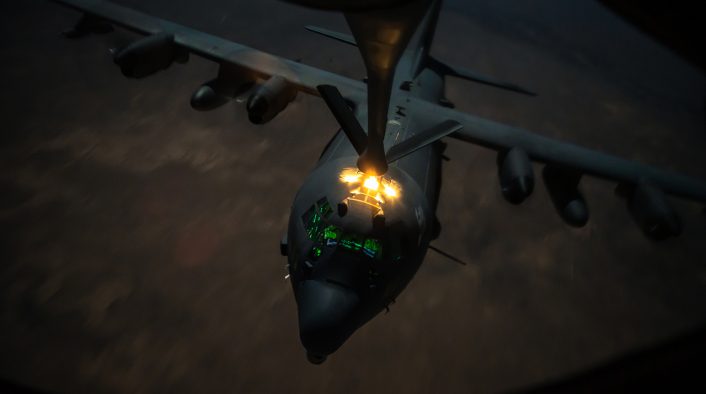
The AC-130J is the most heavily-armed gunship in history, equipped with a variety of potent weaponry, including a trainable 30mm GAU-23/A cannon and 105mm cannon along with hardpoints on its wings for eight GBU-39s or AGM-114 Hellfire missiles.
This diverse array of weapons allows the AC-130J to engage targets with precision and effectiveness, especially in low-light or adverse weather conditions. Overall, it can play a critical role in supporting ground operations, providing close air support to troops in contact, conducting armed reconnaissance missions, and engaging enemy targets.
The AC-130J gunship employs a unique tactical approach when using its cannons: the aircraft circles over a target area in a constant left turn and uses its side-firing cannons to engage ground targets effectively. This allows the gunship to maintain a consistent orbit path around the target while employing its cannons to deliver accurate and sustained fire.
The AC-130’s sophisticated sensors and targeting systems enable precise targeting: the crew aboard the gunship coordinates to adjust the aircraft’s flight path and firing angles, ensuring that the cannons are effectively directed towards the intended targets on the ground.
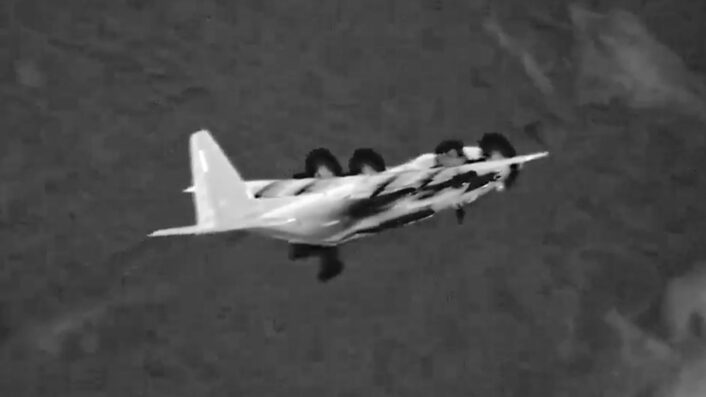
Operational history
Developmental testing and evaluation of the AC-130J were completed by June 2015, with initial operational capability achieved in 2017. The aircraft is scheduled to attain full operational capability by 2025. The 73rd Special Operations Squadron, the first AC-130J squadron, was established at Hurlburt Field, Florida, on February 23, 2018. The Air Force Special Operations Command (AFSOC) received its 31st and final AC-130J at Cannon Air Force Base in November 2022.
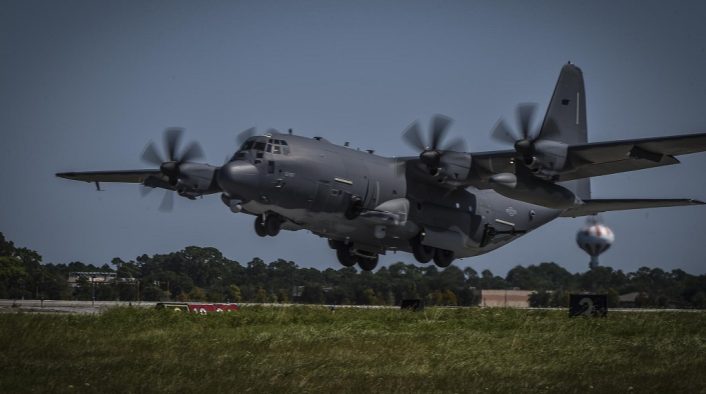
On November 21, 2023, an AC-130J Ghostrider gunship (s/n 18-5886) was observed online during air strikes against an insurgent group responsible for a missile attack on US and Coalition personnel at Al Assad Airbase in Iraq. This deployment of the AC-130J Ghostrider was a direct response to the attack, resulting in several insurgent casualties and at least three confirmed enemy kills.
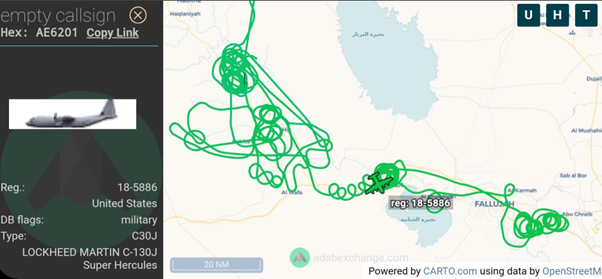
The AC-130J is also equipped with advanced avionics and sensor suites, including infrared and electro-optical sensors, radar, and sophisticated communication systems. These capabilities enable the crew to locate and engage targets with precision while providing real-time situational awareness to ground forces.

